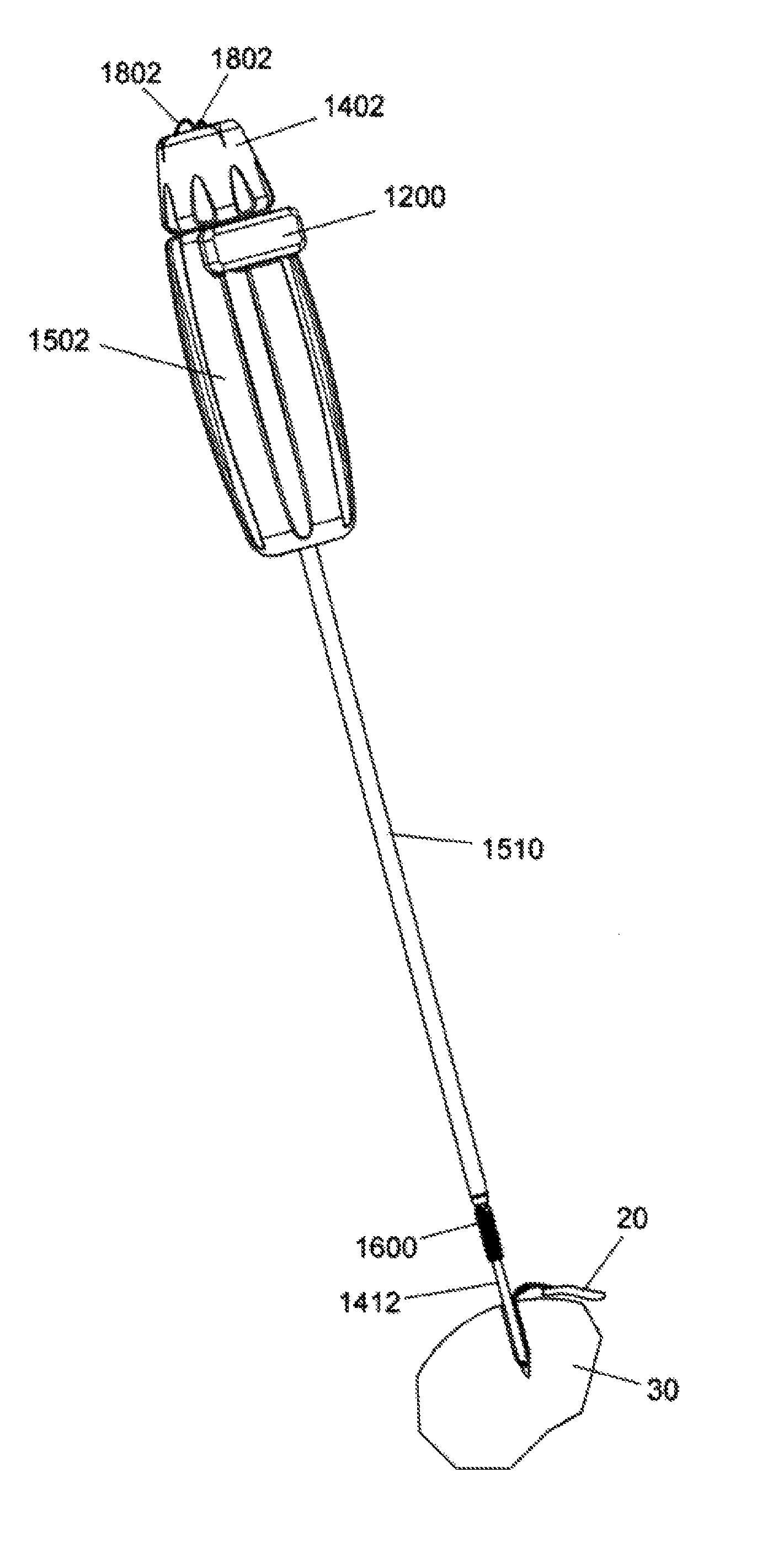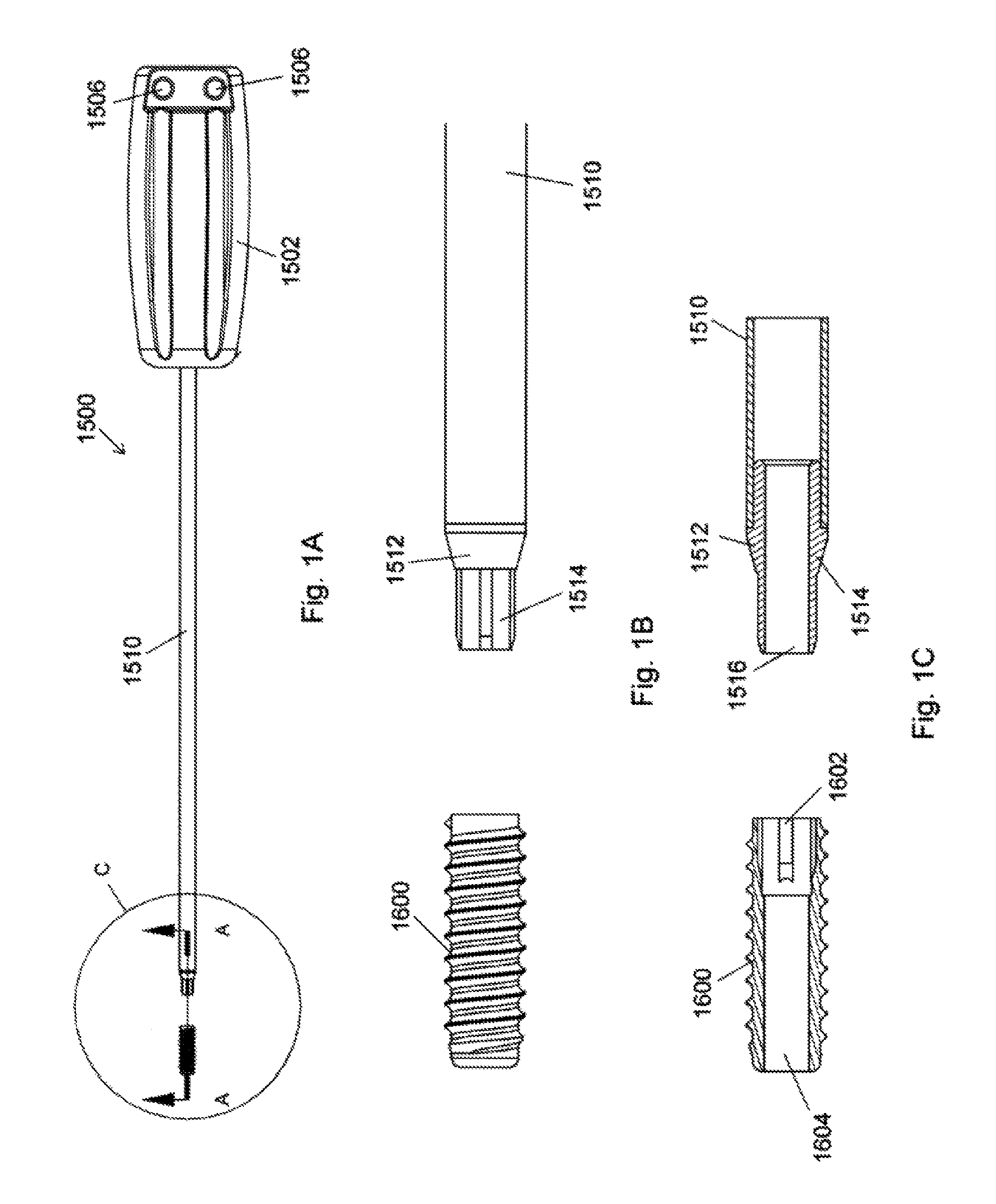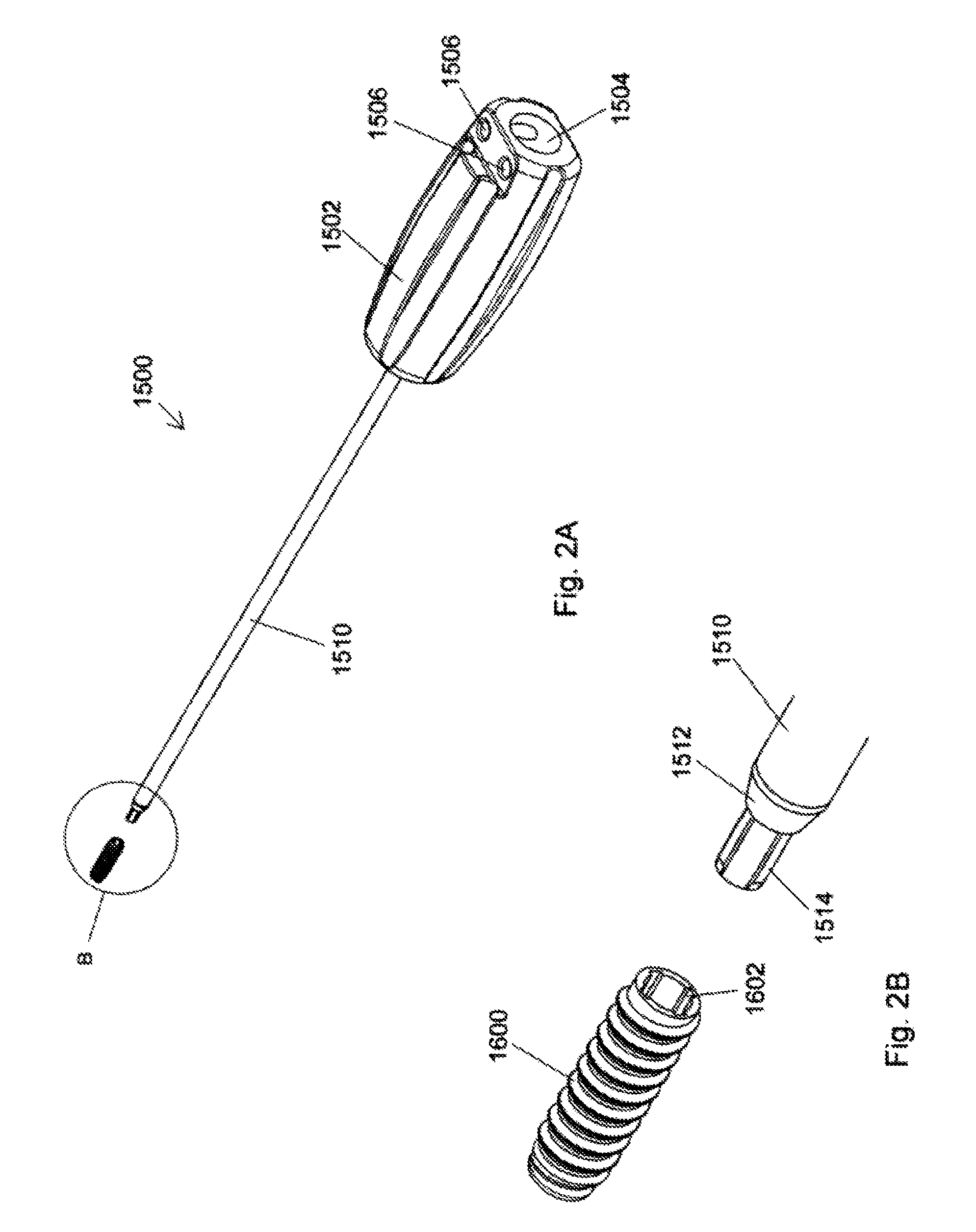Implant placement systems, devices and methods
a technology of implant placement and suture, which is applied in the field of endoscopic and arthroscopic surgery and suture anchor system and device, can solve the problems that the suture tensioning and the establishment of the graft position cannot be accomplished using the driver's distal end, and achieve the effects of preventing suture twisting, preventing relative motion, and maintaining suture tension
- Summary
- Abstract
- Description
- Claims
- Application Information
AI Technical Summary
Benefits of technology
Problems solved by technology
Method used
Image
Examples
examples
[0195]FIGS. 85 through 88 depict a prior art device and method for the placement of a knotless suture anchor. Cannulated driver 100 has a handle portion 102 and a distal hexagonal portion 104 that protrudes beyond anchor 106. Suture 108 in the cannulation of driver 100 forms a loop at the distal end of distal hexagonal portion 104. In FIG. 85, sutures 110, which have been passed through graft 112, are positioned within the distal loop of sutures 108 where they are secured against the distal end of distal hexagonal portion 104 by tension applied by the surgeon to the proximal ends of sutures 108. Alternatively, graft 112 may be positioned within the distal loop of suture 108 and secured against the distal end of distal hexagonal portion 104 and maintained in that position by tension applied to sutures 108. Substantial tension must be maintained in sutures 108 when graft 112 is secured in this manner to ensure that the position of graft 112 does not change during insertion of the graf...
PUM
 Login to View More
Login to View More Abstract
Description
Claims
Application Information
 Login to View More
Login to View More - R&D
- Intellectual Property
- Life Sciences
- Materials
- Tech Scout
- Unparalleled Data Quality
- Higher Quality Content
- 60% Fewer Hallucinations
Browse by: Latest US Patents, China's latest patents, Technical Efficacy Thesaurus, Application Domain, Technology Topic, Popular Technical Reports.
© 2025 PatSnap. All rights reserved.Legal|Privacy policy|Modern Slavery Act Transparency Statement|Sitemap|About US| Contact US: help@patsnap.com



